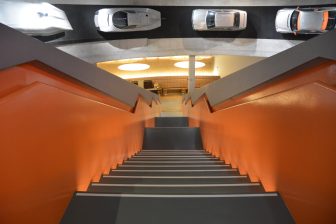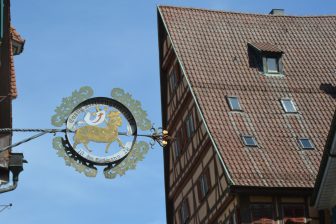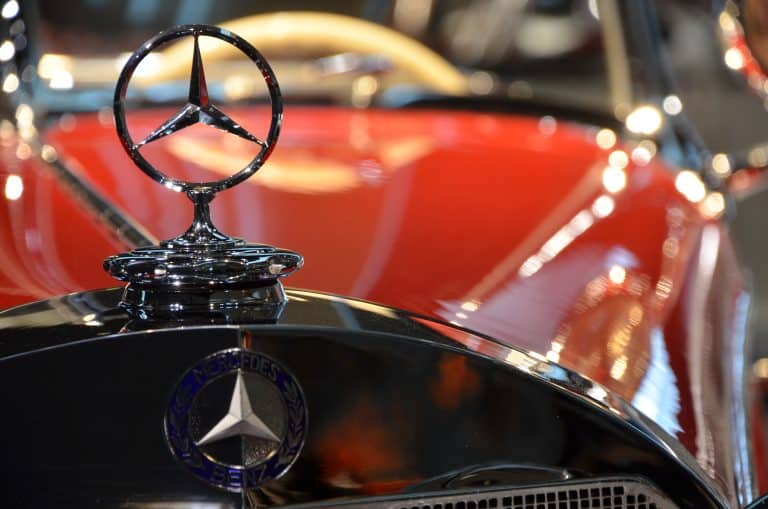
[Apr. 2025] Stuttgart, Germany, is a city with a thriving automotive industry, and the Mercedes-Benz Museum and the Porsche Museum are two of the city’s highlights.
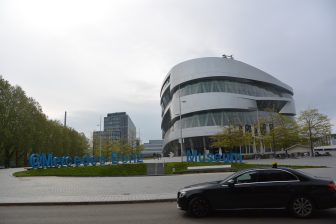
We’re not particularly interested in cars, but since we’re here, we decided to see one of them, and we chose the Mercedes-Benz Museum.
My husband once had a Mercedes-Benz (now it’s a Toyota).
However, this museum is located quite far from the city centre, and we learned at the hotel reception that it would be quite a pain to get there by train.
Being of a certain age, we decided to ask for a taxi.
And the taxi that arrived was, fittingly, a Mercedes-Benz taxi.
It was a taxi ride from Marienplatz, where the hotel is located, to the museum for €25.
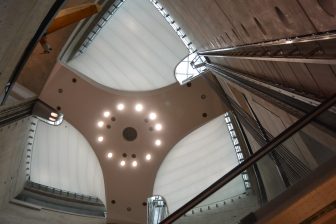
The Mercedes-Benz Museum was modern, cool, and well-designed.
The admission fee is €16 per person.
The ticket seller was so happy when she found out I was Japanese that she waved goodbye to me with both hands when I left.
The admission fee also includes a guided tour through headphones (in many language, including Japanese and Italian).
We first went up to the top floor in a stylish elevator.
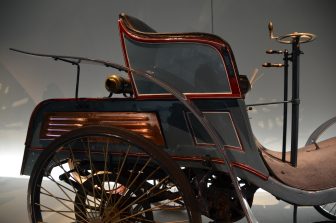
The top floor is the starting point of history, and from there, history literally descends.
The WIFI was supposed to start the guided tour through headphones when you entered each room, but it didn’t work that well.
But maybe that was enough.
I only listened to the explanations I wanted to hear.
Apparently, Benz and Daimler were rivals in the late 19th century.
It seems that Daimler was better in terms of speed and engines, while Benz was better in terms of design and luxury.
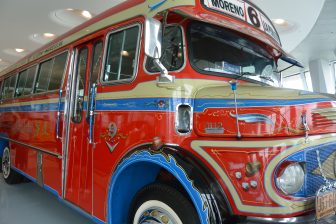
There were many firsts, including the world’s first shared bus.
Later, in the wake of the Great Depression, the two companies merged in 1926 to become Daimler-Benz AG.
Now the company is called the Mercedes-Benz Group, so the Daimler name has disappeared from the front.
During World War II, the company played a part in the Nazi military industry, and was completely destroyed after the war.
But it seems to have grown by riding the wave of demand for reconstruction.
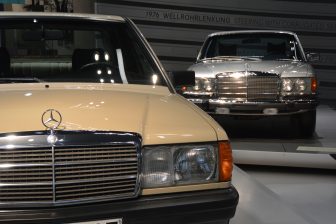
In addition to mainstream passenger cars, there was a room with a collection of historical buses, a room with trucks, and a room with official vehicles such as ambulances.
The bus that ran in Buenos Aires was particularly cute.
There was also a room with a collection of cars driven by celebrities, including the late Princess Diana’s car.
We also found the “190” that my husband owned, so we took a commemorative photo.
However, my husband’s car was custom-made and was a sort of blue-grey colour.
Towards the end, we both found a red car that we thought would be perfect if we were to buy one now.
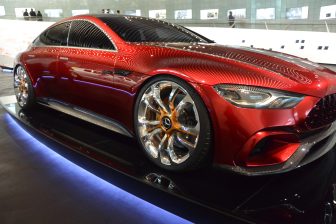
Maybe because it was still new, there were only English explanations.
Of course, there was also a souvenir shop with some pretty expensive models for sale.
Even though we’re not particularly interested in cars, we thoroughly enjoyed learning all this historical information at this museum, and I think anyone interested in technical matters could spend a whole day there and learn a lot.

